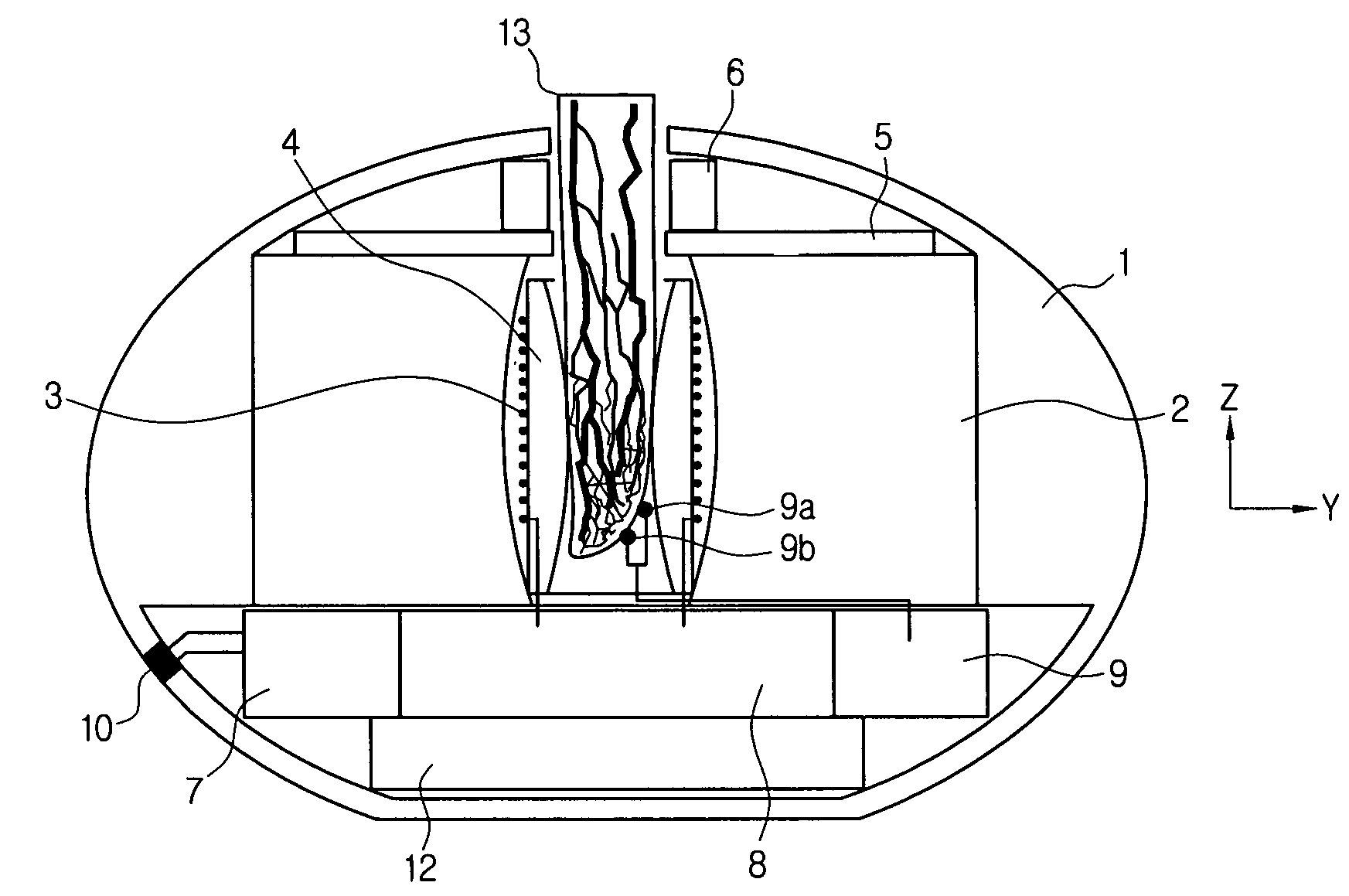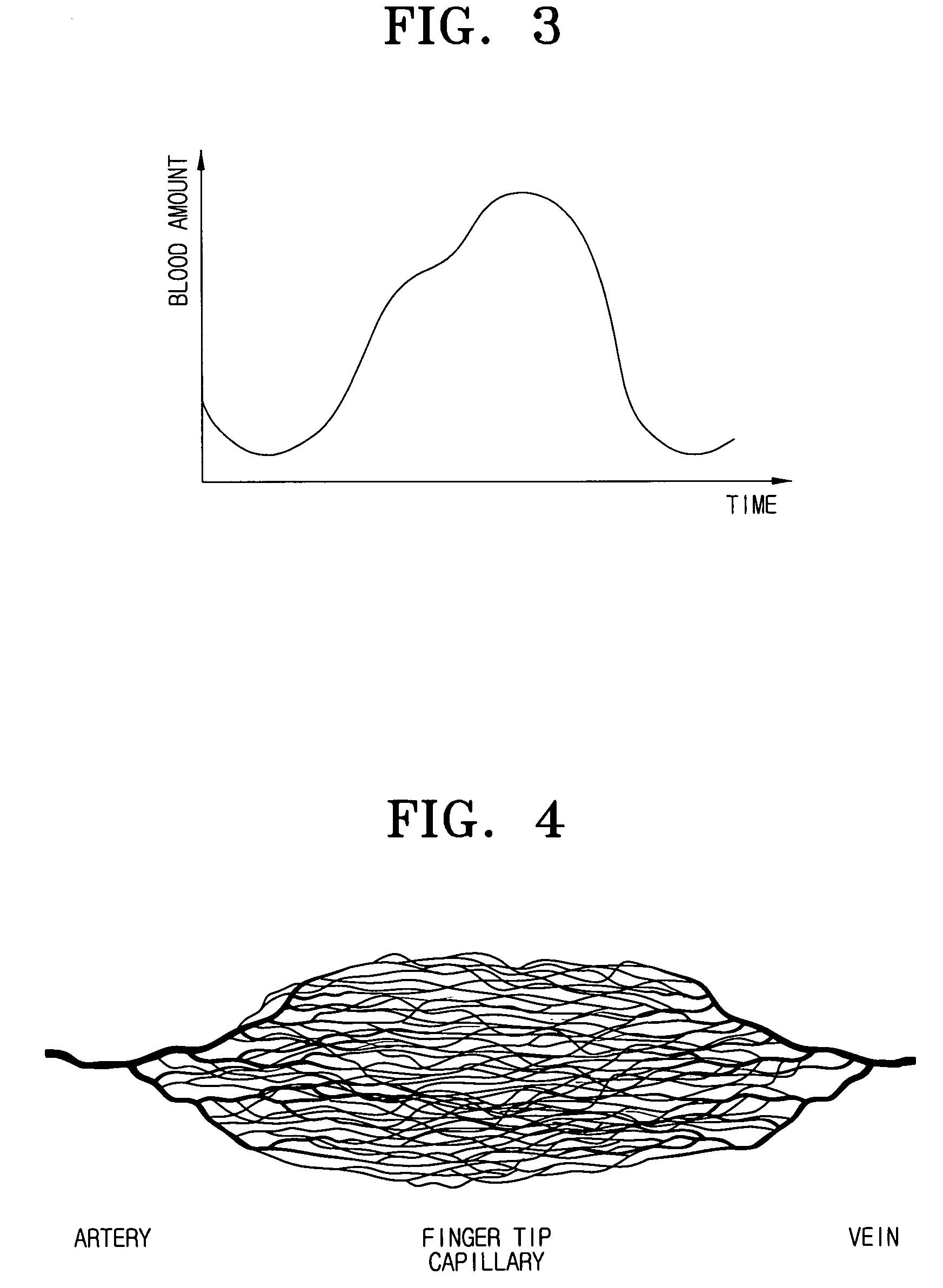Method for measuring nuclear magnetic resonance longitudinal axis relaxation time of blood and apparatus using the same
a nuclear magnetic resonance and longitudinal axis relaxation technology, applied in the field of methods and apparatus for measuring blood nuclear magnetic resonance can solve the problems of difficulty in finding the regularity of relaxation time in the same species, high cost of nmr imaging apparatus, and high cost of additional capability, so as to achieve accurate measurement of nmr longitudinal axis relaxation time and minimize influence
- Summary
- Abstract
- Description
- Claims
- Application Information
AI Technical Summary
Benefits of technology
Problems solved by technology
Method used
Image
Examples
Embodiment Construction
[0061]Hereinafter, exemplary embodiments of the present invention will be described in detail with reference to the accompanying drawings.
[0062]The present invention discloses “NMR molecular dynamic temperature” as a new medical diagnosis factor. This factor is obtained by arithmetically averaging (noninvasively measured) longitudinal axis relaxation time of human blood over a relatively long time (several days or one week). When this factor quickly changes over time, this may be an indication that any histopathological process in the organism is proceeding and a user is required to visit a hospital. A compact NMR relaxometer can initially predict a number of diseases that change protein concentration, a conformation and function of a giant molecule, and a normal path of a normal molecule process within an organism and that are generated at a molecular level. Of course, this means that patients should periodically use the NMR detector. The most commonly significant factor for the NM...
PUM
 Login to View More
Login to View More Abstract
Description
Claims
Application Information
 Login to View More
Login to View More - R&D
- Intellectual Property
- Life Sciences
- Materials
- Tech Scout
- Unparalleled Data Quality
- Higher Quality Content
- 60% Fewer Hallucinations
Browse by: Latest US Patents, China's latest patents, Technical Efficacy Thesaurus, Application Domain, Technology Topic, Popular Technical Reports.
© 2025 PatSnap. All rights reserved.Legal|Privacy policy|Modern Slavery Act Transparency Statement|Sitemap|About US| Contact US: help@patsnap.com



